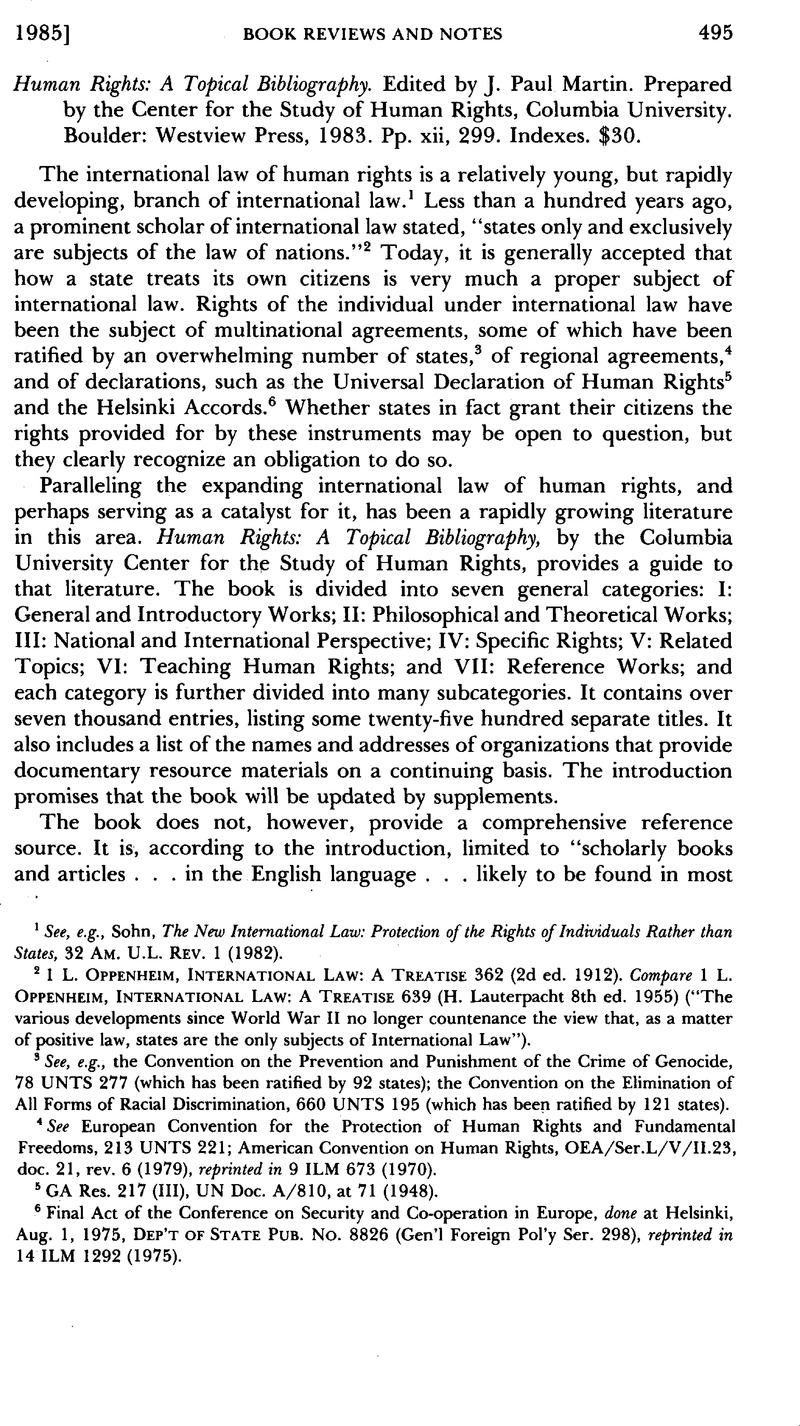No CrossRef data available.
Published online by Cambridge University Press: 27 February 2017

1 See, e.g., Sohn, , The New International Law: Protection of the Rights of Individuals Rather than States 32 AM. U.L. Rev. 1 (1982)Google Scholar.
2 1 Oppenheim, L., International Law: A Treatise 362 (2d ed. 1912)Google Scholar. Compare 1 Oppenheim, L., International Law: A Treatise 639 (Lauterpacht, H. 8th ed. 1955)Google Scholar (“The various developments since World War II no longer countenance the view that, as a matter of positive law, states are the only subjects of International Law”).
3 See, e.g., the Convention on the Prevention and Punishment of the Crime of Genocide, 78 UNTS 277 (which has been ratified by 92 states); the Convention on the Elimination of All Forms of Racial Discrimination, 660 UNTS 195 (which has been ratified by 121 states).
4 See European Convention for the Protection of Human Rights and Fundamental Freedoms, 213 UNTS 221; American Convention on Human Rights, OEA/Ser.L/V/II.23, doc. 21, rev. 6 (1979), reprinted in 9 ILM 673 (1970).
5 GA Res. 217 (III), UN Doc. A/810, at 71 (1948).
6 Final Act of the Conference on Security and Co-operation in Europe, done at Helsinki, Aug. 1, 1975, Dep’t of State Pub. No. 8826 (Gen’l Foreign Pol’y Ser. 298), reprinted in 14 ILM 1292 (1975).
7 See, e.g., De Fonseca, G., How to File Petitions on Human Rights Violations (1975)Google Scholar; Int’l Aspects Comm. of the Individual Rights and Responsibility Section of the ABA, An Analysis of the Procedures of the United Nations Regarding Individual Petitions with Respect to Human Rights, 4 Hum. Rts. 217 (1975); Guggenheim, , Of the Right to Emigrate and Other Freedoms: The Feldman Case 5 Hum. Rts. 75 (1975)Google Scholar.